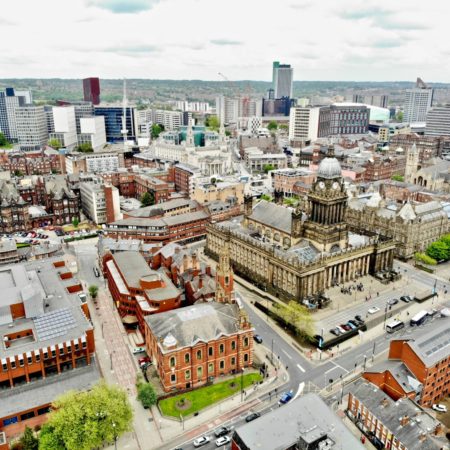Innovative And Sustainable Developments Can Breathe Life Into City Centres
Is building new homes in urban areas better than building over the countryside? It certainly has a lot going for it in terms of sustainability if residents have easy access to a reliable public transport network. But, there are issues.
First, a large area of potential development land is designated as metropolitan green belt. Second, house building in densely populated urban areas has always been viewed as more difficult and expensive than on large open greenfield sites.
With innovative thinking about what we build, where we build and how we build, there are solutions available that are more economically, socially and environmentally sustainable.
What Is Metropolitan Green Belt Land?
Metropolitan green belt is defined as undeveloped land within a ten minute walk of a railway station. It’s estimated that the total area of metropolitan green belt land is roughly the same as the whole of Bedfordshire and enough to accommodate three million new homes.
The term ‘green belt’ is often a bit misleading. Often it’s not very green and not available for communities to use. It just isn’t built on. Some people are vehemently opposed to developing these urban sites, saying that they help to prevent sprawl and coalescence.
Are ‘Hard to Develop’ Sites Still Hard?
In addition to designated metropolitan green belt land, there are many other ‘hard to develop’ sites. These are often small and hard to access. They have been neglected because they seem unviable, even though they could provide more sustainable answers to the UK’s housing crisis.
All of this underlines the point that we need to reframe the debate about urban housing developments.
Innovative House Building Brings More Options
Innovative construction methods bring new opportunities to deliver outcomes that improve lives and work better for everyone.
Creating homes from pre-manufactured components allows developers and housing associations to re-evaluate potential sites that looked too constrained, densely populated, or hard to access. Innovation in house building simplifies deliveries and vehicle movements. It needs less onsite activity and storage of materials and can eliminate the need for scaffolding.
There’s also the opportunity to achieve economies of scale through standardised products: effectively building at scale (as with a large open greenfield site), but across multiple smaller sites in urban areas.
Osborne has a range of solutions that optimise land use, particularly in urban areas.
Sustainable Places to Live
Building new homes within ten minutes’ walk from a railway station is surely more sustainable than large-scale developments on the edges of towns where everyone has to jump in a car to access amenities and jobs.
Nobody is talking about building over the local park. But, an enlightened approach could enhance communities through mixed tenure schemes blended with usable green and blue spaces – blue (water) and green (vegetation) spaces are nature-based features situated in built-up areas that form part of the urban landscape. Such schemes could improve the overall environment and support local businesses. Most importantly, they will make a significant impact on the UK housing crisis.
For more information contact Mike Peskin ([email protected]).

